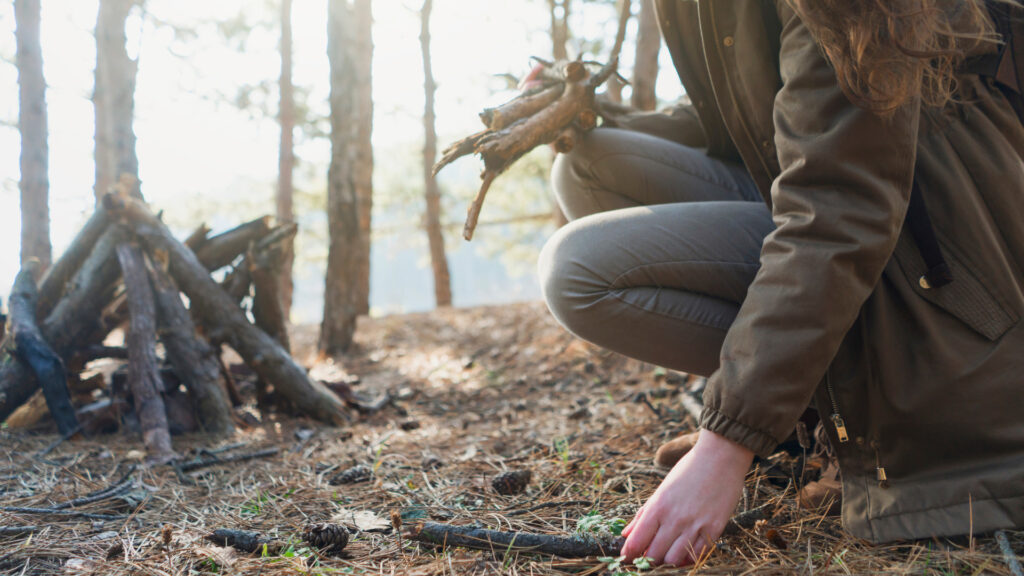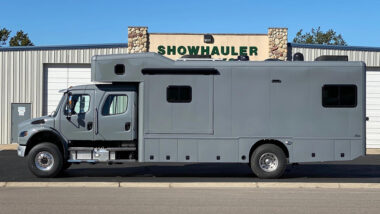Table of Contents Show
Whether you want to enjoy a s’more or create a relaxing vibe, a campfire is essential to camping. However, you’re in for a long trip if you don’t know how to start a campfire.
Luckily, you can do a few things to make it easier on yourself. Trust us, it’s not nearly as complicated as some people make it appear.
Today, we’ll walk you through how to start a campfire when needed. So grab your roasting sticks, and let’s get started!
What Is a Campfire?
A campfire is typically a small outdoor fire. It usually sits inside of a fire pit or ring. Campfires can be extremely useful in a variety of situations. In addition to being used for recreational purposes, a campfire could save your life by creating light or heat and attracting attention.
Generally, you expect to see campfires while camping or at outdoor gatherings. While typically used to stay warm, create light, or cook food, campfires become places to socialize. There’s something special about the glow of a campfire that gets people talking and listening to each other.
What Are the Best Ways to Build a Campfire?
When building a campfire, the method you use can be critical. One of the most common methods is the teepee method. Lean small sticks or twigs against each other atop an easily ignitable material. The structure will begin to resemble a teepee, and you will continue to add larger pieces of wood as the fire grows.
Another popular method is the lean-to method. This requires you to take a larger piece of firewood and lay the ignitable material next to it. You then take sticks and twigs and lean them against the wood so they cover the material. After the material ignites, the sticks and twigs will catch fire, and you can slowly add larger pieces.
The final method you can try is the log cabin method. This is more advanced but is easy to do with practice. You start by placing two logs parallel to one another. Leave space shorter than your logs so you can lay two smaller pieces of wood perpendicular to the original ones. Place materials inside the structure that you’ll ignite and add layers decreasing in size.
Each method can be fantastic in a variety of circumstances. The lean-to method is beneficial in windy situations, while the teepee method helps quickly start a campfire. However, the log cabin method is generally best when you need to control the direction of the flames or need a longer-lasting fire.
How to Start a Campfire (Step by Step)
Now that you know some basic strategies, it’s time to start walking through the process. Some of the steps are easier than others, but practice makes perfect. With a little determination, you’ll practically be a pro before you know it!
Know Local Regulations
Before lighting a fire, you need to know the local regulations. Some areas experience severe droughts or dry seasons where fire bans are common. Even a small fire could land you in serious trouble in these locations. It only takes a small spark to ignite a blazing fire that can spread quickly and get out of control.
Remember what Smokey Bear said, “Only you can prevent wildfires.” You must know the rules and regulations where you’re camping or adventuring. If you don’t, don’t say we didn’t warn you.
Choose the Right Location
As long as it’s legal, it’s now time to choose the spot where you’ll start the campfire. Find a flat, level surface that’s away from potential fire hazards. This includes dry grass, overhanging branches, and any flammable materials. If you’re camping, you don’t want it next to your tent, camper, or other structure.
Remember to consider the direction of the wind when it comes to blowing smoke. Ideally, you want your campsite to be upwind of the fire to avoid the smoke infiltrating where you’ll be relaxing and sleeping.

Gather Your Materials
The next step is to start gathering the necessary materials. If you try to start your fire without all the materials, you could be wasting your time or making it more complicated than it has to be.
You first need to look for tinder. These are dry materials that can burn very hot and quickly. Items like dry leaves, grass, and pine needles are perfect.
You’ll also need some kindling or slightly larger pieces of wood than the tinder. Add this to the fire once it ignites and burns, and make sure you have plenty available to ensure a healthy and stable flame.
Finally, you’ll want to have plenty of firewood on hand. You don’t need to gather all this immediately, but you should have some on hand and know where to find more. You’ll need enough to feed the fire once it gets going.
Keep in Mind: Can You Take Someone’s Leftover Campfire Wood? Before you do, you’ll want to read this!

Create a Fire Pit
Most established campsites will provide a fire pit. However, if you camp in a remote area, you’ll likely need to create your own. Lucky for you, this is an effortless and straightforward task.
Look for large rocks that you can use to pile up into a circle. Once you create your ring, you want to make sure to keep your fire small enough to fit inside of it.
The rocks will help prevent the fire from spreading outside the circle. Just be mindful of gaps in the structure and do your best to find smaller pieces to stuff into the holes.
Build the Fire
Now that you have the materials and your fire pit, it’s time to start building the campfire. Use whichever method you prefer, but you want to be efficient.
The last thing you want to do is be in a hurry while building your fire. This typically results in rushing the process and stamping out the fire before it ignites.
Remember, start small and slowly add to it. Trying to pile too much on at first will smother the flames, and you’ll have to start from the beginning.
We suggest planning ahead if you’ll rely on the fire as a light source. You don’t want to wait until dark to start building the fire. The darker it gets, the harder it will become, and the more you’ll panic.

Maintain the Fire
Once you have the fire going, continue to maintain it. Once you see the fire consuming the firewood, you’ll want to toss a couple of logs onto the fire. However, be careful not to add too much at one time. Once you get the fire going, you want to avoid accidentally extinguishing it prematurely.
Keep in Mind: If you’re still struggling to start a fire, consider trying these Homemade Campfire Starters That Actually Work!
Extinguish the Fire
When done with the fire, extinguish it. You should never go to bed or leave a campfire unattended. It only takes a second for a fire to spread and get out of control. Before you know it, you could have a dangerous situation.
Don’t wait until you’re ready to go to bed to extinguish your fire. Stop feeding the fire beforehand and sprinkle some water onto it. Stir the hot ashes and mix in a little bit of water.
If you plan to start a campfire again the next day, you want to avoid flooding the fire pit. If you do, starting the next fire will be more challenging. You’ll want to continue this process until there’s no steam or you feel any heat.
Practice Makes Perfect for Learning How to Start a Campfire
For better or worse, practice makes perfect when learning how to start a campfire. The more you do it, the easier it will become. If you’re looking for an excuse to have a campfire, you can always pull the “I need to practice” card.
Whip out the s’more supplies, and there’s a good chance that nobody will argue with you. Just make sure you have enough s’mores to share with them.
Do you have any other tips for starting a campfire?






